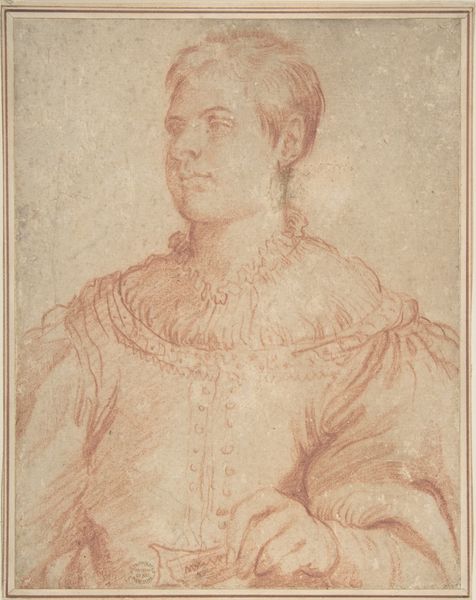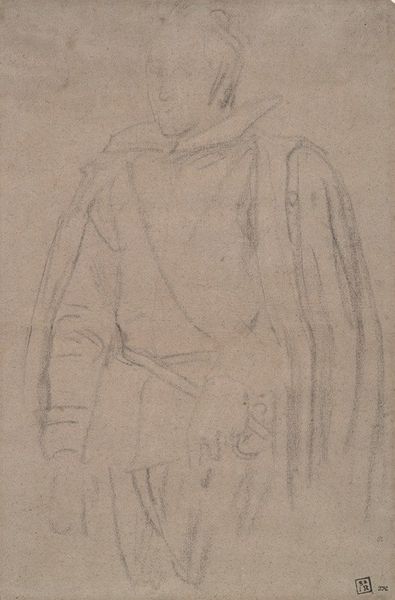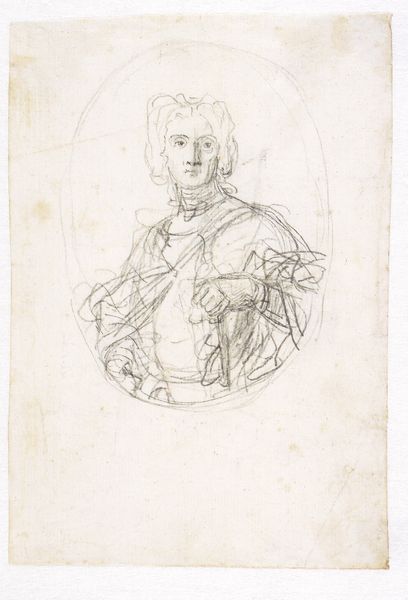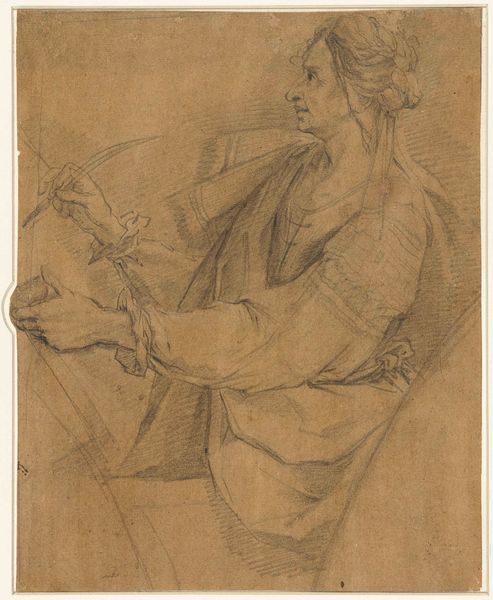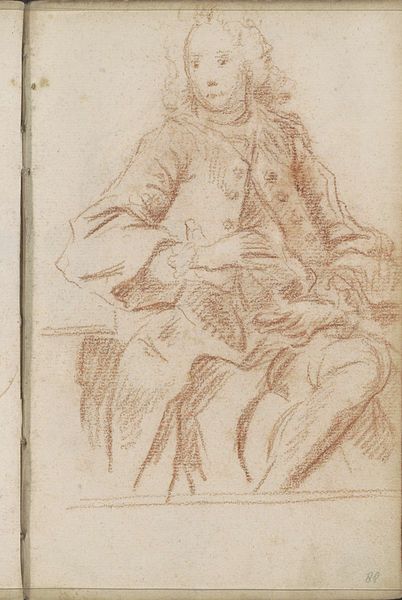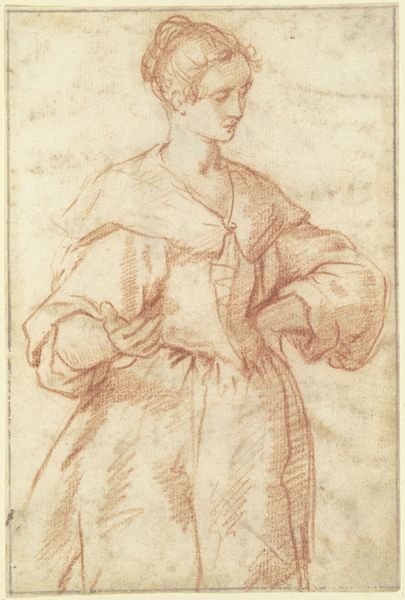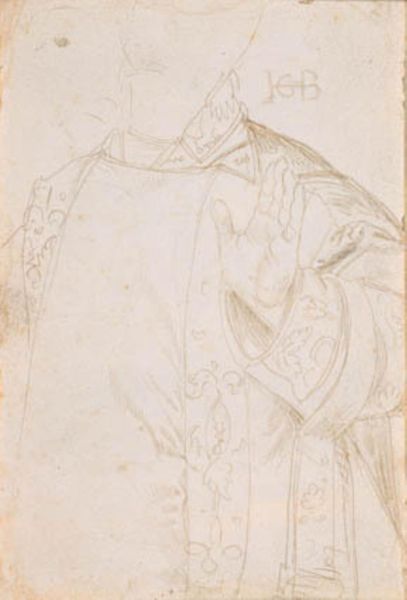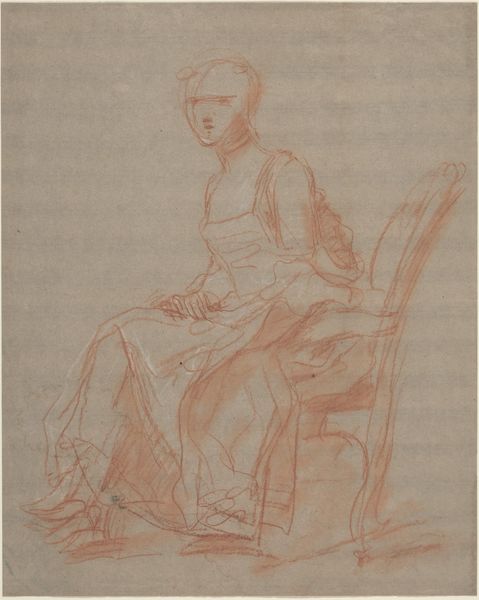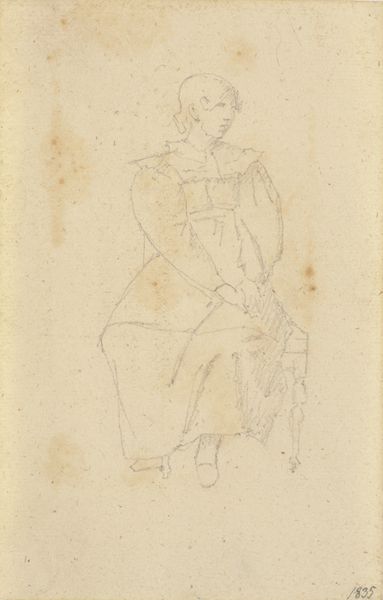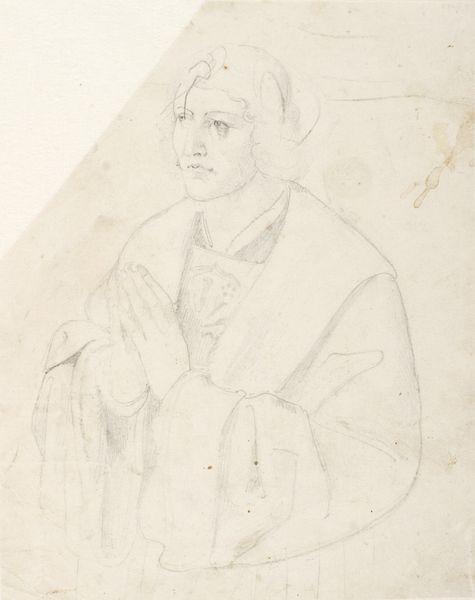
Study for a Three-Quarter-Length Portrait of a Gentleman (recto), Study of a Clothed Figure and a Foot (verso) 1605 - 1667
0:00
0:00
drawing, print, paper, dry-media, pencil
#
portrait
#
drawing
#
baroque
# print
#
figuration
#
paper
#
dry-media
#
pencil drawing
#
pencil
#
italian-renaissance
Dimensions: 14-5/8 x 9-1/2 in. (37.1 x 24.1 cm)
Copyright: Public Domain
Curator: Here we have a drawing from the Italian Renaissance, “Study for a Three-Quarter-Length Portrait of a Gentleman (recto), Study of a Clothed Figure and a Foot (verso)” created sometime between 1605 and 1667 by Mario Balassi. Editor: There's an inherent tension in it—the subject looks very still, almost serene, but the unfinished sketch lends a certain anxious energy to the whole piece. Curator: It’s executed in pencil, using dry media on paper, and it’s interesting that you sense anxiety. In portraiture of this era, a sitter's attire and bearing signaled not only social status, but character. What do you make of the hands and their gestures? Editor: Those hands, poised and elegant, betray a deeper unease, particularly when positioned so close to what appears to be some sort of missive. Wealth at that time, more often than not, meant land acquired at the cost of disenfranchisement. The almost unfinished sketch quality underscores how rapidly the very foundations upon which that class structure was constructed could crumble. Curator: I can appreciate how that unfinished quality heightens the work's emotional accessibility for contemporary viewers. Perhaps the use of sanguine chalk adds a subtle warmth to the gentleman’s character, hinting at an attempt to present humanity amidst this backdrop of societal norms and class divisions. Editor: Do you think so? To me, that monochromatic approach further underlines the pervasive nature of social stratification at the time, as if to say that a single ‘hue’ governed their entire world, both literally and figuratively. Curator: Well, there’s another drawing on the verso that depicts a clothed figure and a foot, and that layering perhaps emphasizes this individual’s humanity, his physical existence beyond representation, the art providing depth and dimensionality, much as social justice adds necessary perspective to human experience. Editor: Yes, maybe, I still find that overall mood tinged with disquiet, with privilege as a precarious and ultimately isolating stance. Curator: Even across the centuries, the image resonates; it provokes powerful reactions related to societal privilege and questions of character and social roles. Editor: It’s definitely stirred thoughts around the complexities inherent to wealth, then and now.
Comments
No comments
Be the first to comment and join the conversation on the ultimate creative platform.
